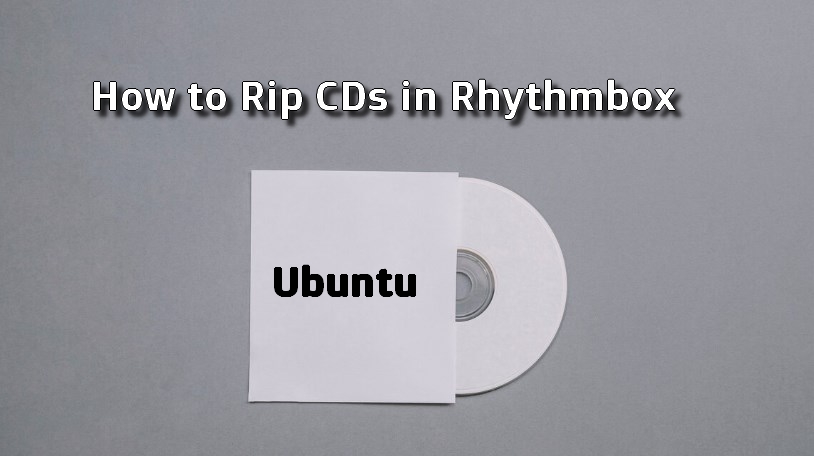In an era where digital media reigns, the practice of converting CDs to digital format is increasingly relevant. This comprehensive guide provides a detailed walkthrough for digitizing your CD collection using Ubuntu’s native tools.
Whether you’re looking to preserve your music library or simply declutter physical media, this article will equip you with the necessary knowledge and techniques.
How to Digitize CDs Using Ubuntu’s Native Media Player
Although physical CDs have largely fallen out of favor, many music enthusiasts still possess valuable collections dating back decades. The most practical solution to both preserve and modernize these collections is to convert, or “rip”, them to a hard drive or solid-state drive.
This process is surprisingly straightforward on Ubuntu, thanks to its native, open-source media player. This player is known for its simplicity and stability, making it an ideal choice for both beginners and experienced users.
Preparation:
- Ensure your computer has a functional CD/DVD drive;
- Install the native Ubuntu media player, if not already available, using the following command: sudo apt install [media player name].
Ripping Process:
- Insert your CD into the drive and launch the media player;
- In the Music view of the Library, select ‘Import’, or choose your CD under ‘Devices’ and click ‘Extract’;
- The software automatically adds the extracted files to your library. Access them by clicking ‘Recently Added’ in the navigation bar.
Troubleshooting:
If the CD fails to load, remove and gently clean it with a soft cloth and mild detergent or vinegar, wiping from the center outwards.
- For scratched CDs, apply a small amount of non-gel white toothpaste and gently polish;
- If problems persist, test the CD in another drive to isolate the issue;
- The entire ripping process typically takes 10-15 minutes per CD.
Post-Ripping Actions:
- To play the ripped files, go to ‘Recently Added’ under Playlists;
- You can edit metadata such as title, artist, album, and more by right-clicking a track and selecting ‘Properties’. For multiple tracks, use SHIFT + Click or CTRL + Click.
This method not only simplifies the management of your music library but also ensures your collection’s longevity in a digital format, accessible on your Ubuntu-based PC.
Advanced Features and Customization in CD Digitization
Digitizing your CD collection is more than just a straightforward transfer of audio files. It involves understanding and utilizing various advanced features and customization options that enhance the overall experience. This section delves into these features, offering valuable insights for users seeking a more tailored approach.
- File Format Selection: Choose the right audio file format for your needs. Common formats include MP3, FLAC, and WAV. Each has its advantages, such as MP3 for smaller file sizes or FLAC for lossless audio quality;
- Adjusting Bitrate: Bitrate impacts the quality of the ripped audio. A higher bitrate generally means better sound quality but larger file sizes;
- Handling Metadata: Accurate metadata is crucial for organizing your digital music library. Ensure that information like track titles, artist names, and album titles are correctly entered;
- Album Art Integration: Adding album art to your digital files enhances visual appeal and helps in easy identification in your library;
- Ripping Multiple CDs: Develop an efficient system for ripping multiple CDs. Consider organizing them in batches and scheduling the ripping process to save time.
By leveraging these features, you can significantly improve the quality and organization of your digitized music collection, making it more enjoyable and accessible.
Alternative Software Solutions for CD Ripping
While Ubuntu’s native media player offers a straightforward solution for CD ripping, exploring alternative software can provide additional features and flexibility. This exploration is particularly beneficial for users with specific needs or preferences.
- Asunder: A lightweight and easy-to-use CD-ripping tool that offers extensive file format support and customization options;
- Sound Juicer: Integrates seamlessly with GNOME desktop environments, providing a user-friendly interface for CD ripping;
- K3b: Ideal for users who prefer a more robust application, offering advanced features for CD and DVD burning in addition to ripping.
Each of these alternatives has its unique strengths, and users should choose based on their specific requirements and comfort with the software.
To further expand your Ubuntu experience, you might be interested in integrating other essential applications. For instance, installing WhatsApp on Ubuntu can enhance your communication capabilities, seamlessly bridging the gap between your mobile and desktop environments.
Conclusion
This guide has walked you through the process of converting your CD collection into a digital format using Ubuntu’s native tools. From the initial steps of preparation and ripping to advanced customization and alternative software options, every aspect has been covered to ensure a smooth and efficient experience.
Remember, the transition from physical to digital media is not just about convenience; it’s about preserving your music collection in a format that’s both accessible and sustainable in the digital era. With the right tools and knowledge, you can enjoy your music library in a modern, organized, and space-efficient manner.
Whether you’re a casual listener or an avid music collector, the ability to digitize your CDs on Ubuntu offers a perfect blend of nostalgia and modernity. And with the potential to integrate other applications like WhatsApp, your Ubuntu system becomes a hub of both entertainment and communication. Embrace this journey into the digital music era, and enjoy the timeless melodies of your collection in a new, revitalized form.
